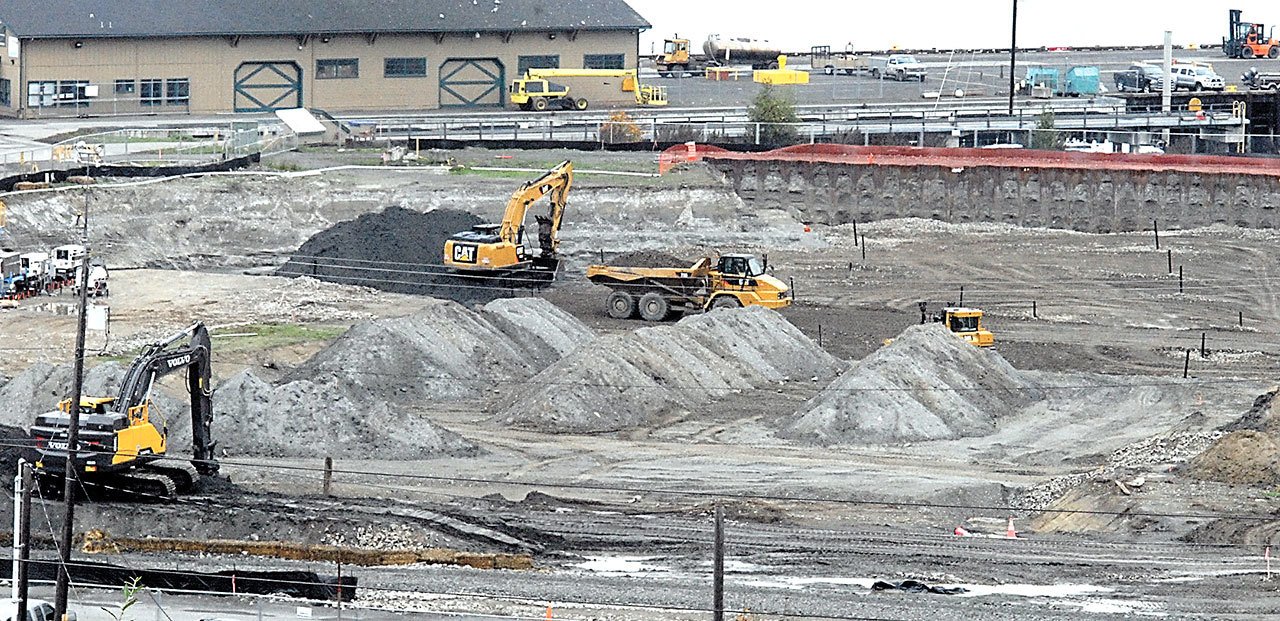PORT ANGELES — Port of Port Angeles commissioners took action Monday morning, officially putting to rest the cleanup of the 19-acre former KPly mill site at 439 Marine Drive.
The cleanup ended up costing $7,007,738.98. While well over the original $3.5 million contract, the final costs came in about $200,000 less than expected.
The costs dropped from $7.2 million because the contractor brought in less fill material than was originally estimated, said Chris Hartman, the port’s director of engineering.
There was work to verify how much work was done, and the results showed Engineering Remediation Resources Group Inc., the contractor on the cleanup, brought in less fill material than expected.
“As a consequence, that project total is well less than the contract total,” Hartman said.
The port has paid nearly $9 million for the cleanup costs, of which $6,024,354 has been reimbursed by the port’s insurers.
As a result of a settlement the port approved in July, the port will have spent no tax payer money on the project, Hartman said.
“We were made whole through the settlement,” he said.
ExxonMobil must pay $5.5 million and Rayonier $2.2 million as reimbursement to the port for their shares of the cleanup costs.
Settlement money will be used to reimburse insurers and the state Department of Ecology, which provided a $2 million grant early in the process that helped fund the upfront costs of demolishing the mill in 2013.
What’s left over from the grant may be used on other cleanup projects or be reimbursed back to Ecology, Hartman said.
In October 2012, the port signed an order with Ecology to conduct a remedial investigation. From 2012-15, the port’s environmental consultant prepared work plans, conducted field investigations and prepared a draft cleanup action plan.
In May 2015, Ecology approved the cleanup action.
Costs from the project nearly doubled from the original $3.5 million bid after testing showed there was actually 53,766 tons of contaminated soil, more than double the original estimate of $21,000 tons.
“We were all disappointed we had to remove a lot more soil than originally anticipated,” said port Commissioner Connie Beauvais. “It doubled the cost of the projects.”
The project was finished in May and the port will continue to monitor the site for contaminants, Hartman has said.
Starting in the 1920s on filled earth, log yards, paper mills, plywood mills, and bulk fuel plants and pipelines occupied the site.
The site has been cleared and inspected for gasoline, diesel fuel, benzene, heavy oil, hydraulic fluid, toluene and other toxic substances that had soaked into the soil.
The site will be monitored for 10 years to ensure it doesn’t pose a risk to human health and that the harbor isn’t impacted from groundwater contamination.
With the cleanup and settlement finished, port officials are looking toward developing a marine industrial park at the site.
Beauvais raised concerns that because more material was removed than anticipated, the port would need to bring in more soil and fill material for the site.
Hartman said it could cost $5 million to $6 million to put in the fill needed to support a heavy travelift at the site.
While the settlement does include a clause that would require ExxonMobil and Rayonier to pay future costs associated with the cleanup, the additional fill would be considered part of future development, Hartman said.
The industrial park would be an expansion of what is already on Marine Drive and would be similar to the work Westport and Platypus Marine are doing, Hartman has said.
The port is working with a consultant on master planning for the site and is meeting with local shipbuilders and repair companies to gather information about what kind of infrastructure is needed.
________
Reporter Jesse Major can be reached at 360-452-2345, ext. 56250, or at jmajor@peninsuladailynews.com.

